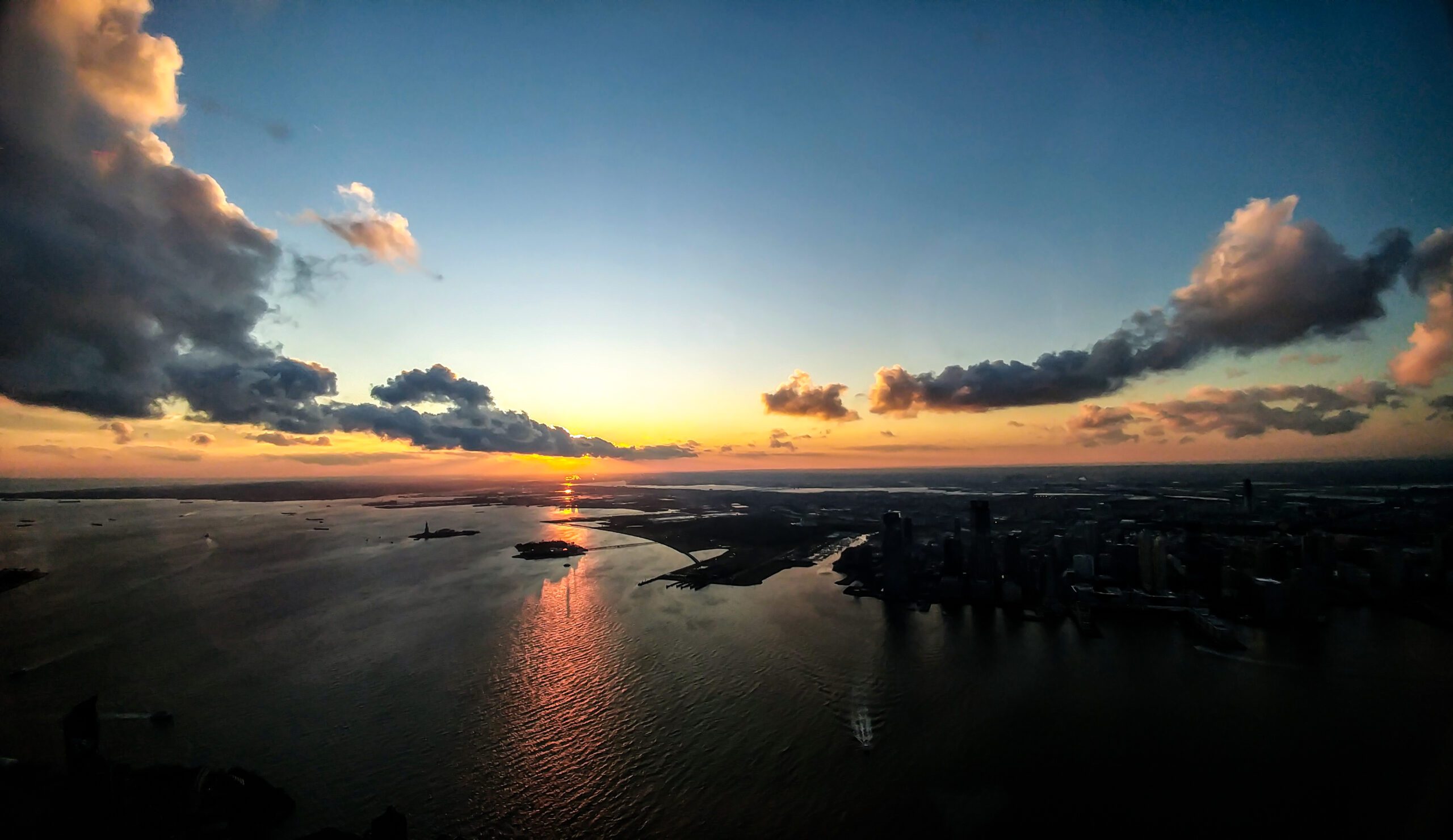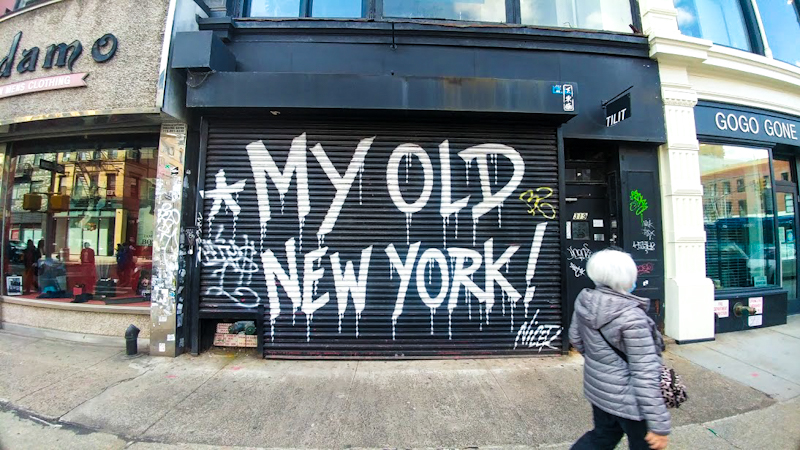
Endearing Old New York
New York City has a way of getting into the hearts of people all over the world. It’s a beacon of inspiration that travelers aspire to get to. It’s a unique entity. This city has an endearing reputation for being tough and romantic because it is.
But also among this historic city’s most notable qualities is that it’s a survivor. It always comes back.
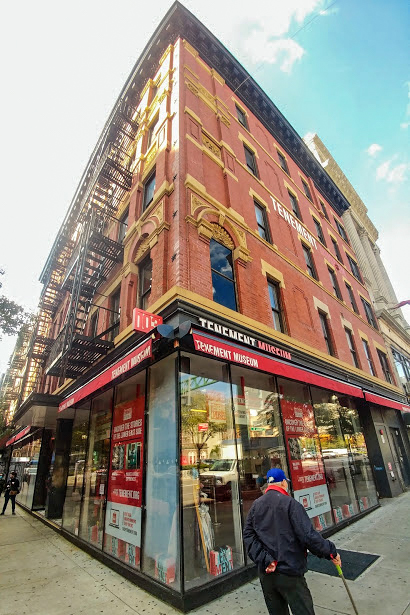
Part of what beckons both transplants and tourists to the Big Apple is the nostalgia and the diverse pockets of the five boroughs ubiquitous in some of the greatest films, music, and shows we love.
The city is a character in itself. A notorious player daring people to discover their inner freak, rebellious artist, true self, or closet voyeur.
In essence, the city is theatrical.
As the U.S. awakens after a long period of reflection, regrouping, and all of that, it’s a new day. And the pulse is strong and the vibe on the horizon today signals reasons to celebrate, together. Because the perennial top destination we affectionately call good old N’Yawk has so much to offer.
The DNA of NYC
To truly show this city some love, you should appreciate its past. As reopening began, it felt important to get out and explore some of old New York specifically.
For diehard fans of historic Gotham like me, there’s a promise of a deeper connection in exploring those things. We appreciate some grit especially with all the glossy high-end malls taking over. And we more than favor the idea of its preservation; it’s a matter of reverence.
Tenement Museum
New York’s Tenement Museum on the Lower East Side of Manhattan began reinventing its tour experiences early on to accommodate the pandemic situation with an elaborate guided outdoor walking tour.
Since then the museum has gotten more creative in ways to take visitors on a fun and fascinating journey back in time. They’ve reinvented exploring the complex dynamics of New York’s multitudes of immigrants, neighborhoods, the rise of big industry, and more.
It was refreshing to be out in the early morning light and coolness sans crowds and traffic at the time. My friend, Steve, and I sipped our beverages on the corner of Delancey and Orchard, outside the museum. Our guide, Gail, met our small group there before our two-hour tour.
After a brief orientation while attaching our headsets, we proceeded towards Grand streaming the live tour on provided audio gear. Like voyeurs, we ogled at the reconstructed tenement interiors through windows, sneaking peeks of nostalgic bits and pieces.
A Peek into the Past
We mostly preferred staying in the moment on the tour, opting to check out the dedicated accompanying app with its extras later. The tour was nicely paced, at times lingering to take in details like the limestone and terracotta architecture of the Jarmulowski Building, the mysterious looking Forward Building, and the community’s Seward Playground.
We lingered there, marveling about being in the middle of a pandemic exactly 100 years later. It felt surreal. We imagined how things might have looked here in the crisis then compared to now. Funny how history tends to lend perspective in trying times. It awakens the lenses of our imagination, teaching and transporting us.
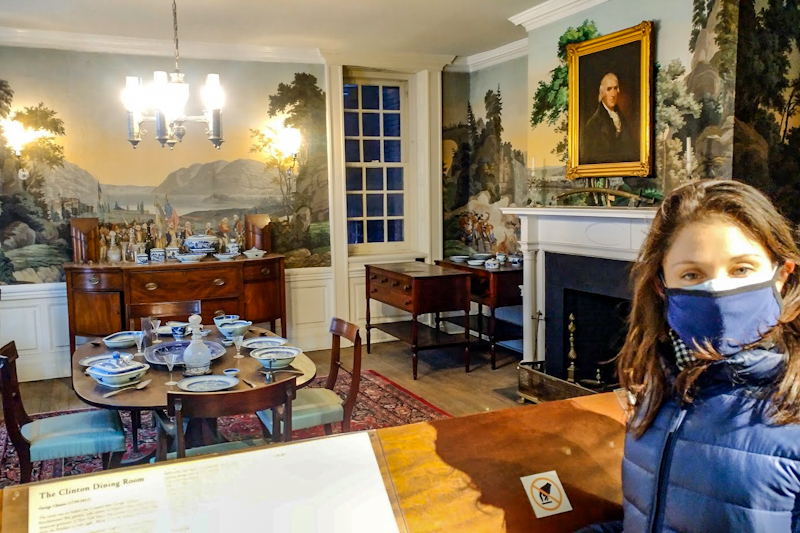
I trailed behind a bit taking in the visuals of a vacant old theater, graffiti, and some old signage revealed by yet another demolition, feeling moved to somehow save them.
This iconic neighborhood is rapidly changing in the name of development, but the landmark sights, the hidden details still have valuable stories to tell. The Tenement Museum’s calendar and guidelines are available online with many digital offerings and ideas continually evolving to further enchant us with the historic city that never sleeps.
A great pairing with the Tenement Museum visit is a cruise to explore the entranceway to the land of opportunity, Ellis Island, which oozes history.
It really has to be seen to be fully appreciated. Great place for a relaxing picnic with a view, too. Don’t let the touristy element fool you, it’s for everyone.
Fraunces Tavern, Revisited
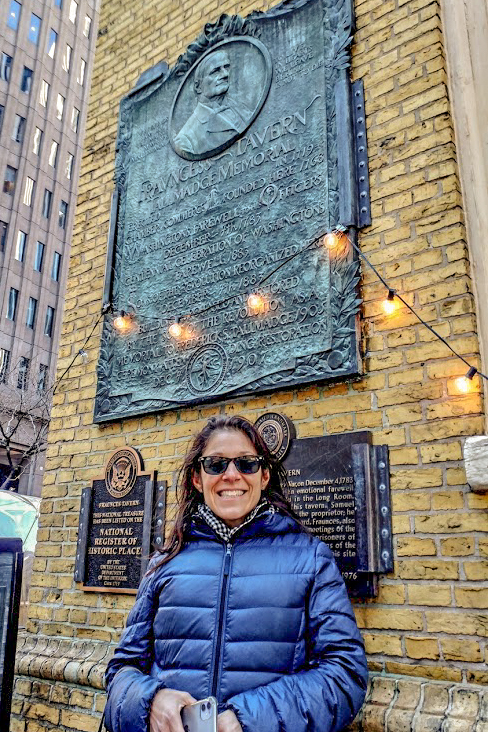
Back in the day – 1783, that is – George Washington and his troops had just run the last of the British out of town, so naturally, they wanted to unwind.
Nearby along the cobblestone streets of South Street Seaport, an oft frequented watering-hole of many a founding father to follow stands outstretched alongside the corners of Pearl and Broad.
It is Fraunces Tavern, established in 1762. It’s the oldest standing structure in NYC. You can’t miss it, and you shouldn’t.
This is where our first President and his officers coalesced for some major decompressing and nourishment as they bid farewell to each other for several days in that pivotal point in U.S. history.
This isn’t just some relic pub kept alive just for tourists; it’s a full-service, multilevel establishment with a restaurant, bar, and live music scene with lots of little filament lit nooks and crannies. There is outdoor seating as well, of course, and Happy Hour is back in New York (okay, maybe it never really left).
Keep in mind, this place hasn’t been revamped or faux-rustic designed to look old. It’s beautiful and bonafide authentic in its original glory; a lively pub in one part, and charmingly romantic dining spot in another, and a relaxed speak-easy setting in another.
It’s also a great place for a local craft beer and oven-baked German pretzel-like my friend, Hillary, and I relaxed with on this particular visit.
A Treasure Trove
You can explore and poke around for yourself. On a self-tour, Hillary and I climbed the narrow steps to the upper levels which housed the establishment’s Inn of yore.
Unexpectedly, the upper-level museum revealed gem after gem in its rooms of elaborate displays, emulating the period of yore. Many other founding fathers and OGs also stayed here through the years, the stories revealed.
The first couple of times I visited Fraunces, for the cocktails and live music, I had no idea the museum was up there. But what an amazing treasure trove of links to history to discover!
The old dining mock-up is fancier than imagined with complete porcelain service set-ups, original furniture, authentic letters, and artifacts …a fascinating deep-dive documenting that era.
A statement from Fraunces during the pandemic reads “From revolution to civil war, from hurricanes to pandemics, with every challenge New York has faced we come back better and stronger,” and that’s the kind of spirit that’s integral in a New York state of mind.
Every time I visit Fraunces, I read the giant plaque on the corner by the entrance. It always gives perspective. There’s your IG photo op. There are quite a few great historic pubs to explore in this area before heading to the latest cool, new offerings along South Street.
For instance, check out the Circle of Hero’s Monument slated to be erected in late summer and includes 19 red maple trees symbolizing the “essential and frontline workers who carried New York through the pandemic,” New York’s Gov. Cuomo announced this spring.
NY Catacombs by Candlelight
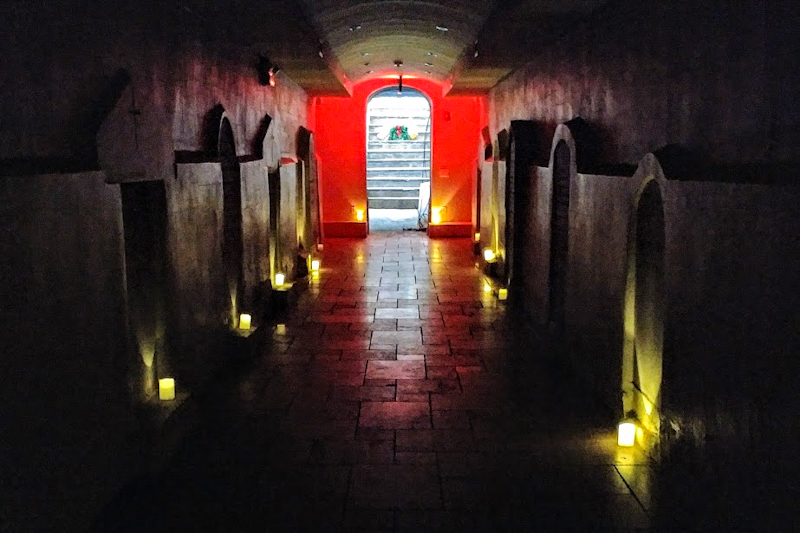
Sometimes you have to dig deeper to get off-the-beaten-path in a city that’s crawling with people.
There are some immersive experiences one doesn’t quite associate with New York, but don’t underestimate this place.
Some interesting things dwell underground, on sacred ground, in fact. And I don’t mean the subway.
Tommy’s New York led me and my visiting friend, Christina, and her German-born mom, Walli, on a sort of off-limits tour inside New York’s catacombs … by candlelight.
Did you know that the grand St. Patrick’s Cathedral by Rockefeller Center is not the original one?
The landmark basilica circa 1809, the original St. Pat’s, stands on Mulberry and Prince in NOLITA. This was once essentially a field; a section where impoverished predominantly Irish immigrants lived, and the church served as a safe haven for many of them and refugees.
This now nationally registered historic site is where deadly anti-Catholic and anti-immigrant riots happened. As Catholics became more established in the city, some of them reached such elite status that they were honored upon passing by being entombed below in the city’s first cathedral.
The ambient flickers of light danced in the dark cool cool corridors. They cast long shadows along the labyrinth of crypts. During our procession, slides appeared on the wall telling stories of the departed who rest here. Christina and Walli were intrigued by the familiar names. It felt like hallowed ground as we explored and even stepped inside a vault.
“…Civil and Revolutionary War Generals, wealthy bankers, and The Venerable Pierre Toussaint, a former slave from the French colony were interred here. Toussaint became a very significant philanthropist to the poor of the city. His remains were moved from here up to the new cathedral when the Pope began the process of his canonization,” our knowledgeable guide, John, revealed.
Pull Out All the Stops
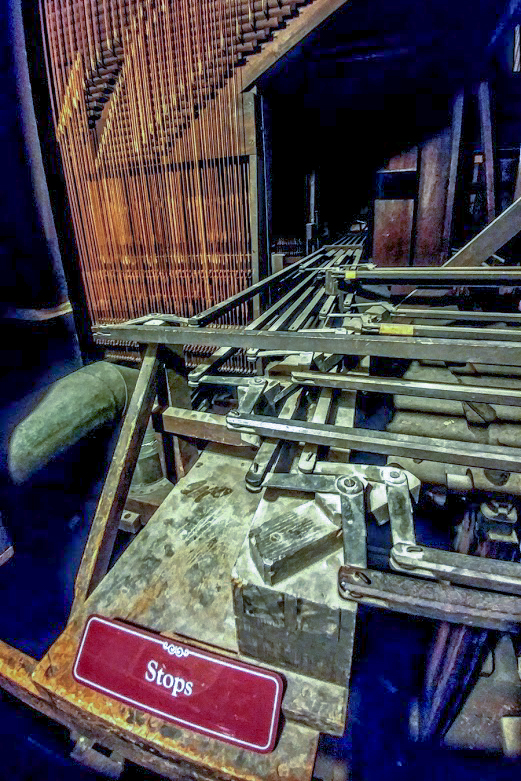
Upstairs from the main level of the picturesque church, is where a notable scene from The Godfather II was filmed. There sits the historic gem known as the Erben Organ. Our guide gave us a chance to get up close and catch a glimpse of its complex anatomy.
“It was constructed by the world-renowned organ-builder, Henry Erben (1800–1884), and represents his finest work. The organ has served countless liturgies, concerts, and rehearsals over its 150 years.
It is the last remaining large, intact pipe organ by Erben,” John informed us as we quietly climbed the small spiral staircase to the perch.
This level bestows a wonderful view of the ornate basilica as well as the 2,500 pipes ascending grandly into the air.
It was interesting to hear some music history tidbits as our insightful guide noted that “An Italian Opera Company was brought to New York to perform a benefit concert for New York’s Orphan Asylum in 1826, becoming one of the earliest opera performances in the United States.”
It’s not hard to be blown away by its sound and vibration.
Enamored NYC native filmmaker and honorary Chair of Friend’s of Old Saint Pat’s, Martin Scorsese, commented in regards to the organ’s preservation: “Why preserve this glorious instrument? Because it is unique and irreplaceable …Listening to the transcendent sound of this 19th-century American masterpiece will take us where we need to be.”

